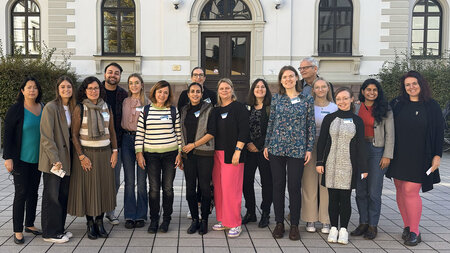Publications
- Kern-Isberner, G., Ragni, M., & Sauerwald, K. (2019). Tutorial on Cognitive Logics.
- Spiegel, L. P., Kern-Isberner, G., & Ragni, M. (2019, August). Rational Inference Patterns. In Pacific Rim International Conference on Artificial Intelligence (pp. 405-417). Springer, Cham.
- Todorovikj, S., Friemann, P., & Ragni, M. (2019, August). A Cross-Domain Theory of Mental Models. In Pacific Rim Knowledge Acquisition Workshop (pp. 184-194). Springer, Cham.
- Zink, M., Friemann, P., & Ragni, M. (2019, August). Predictive systems: The game rock-paper-scissors as an example. In Pacific Rim International Conference on Artificial Intelligence (pp. 514-526). Springer, Cham.
- Breu, C., Ind, A., Mertesdorf, J., & Ragni, M. (2019, May). The weak completion semantics can model inferences of individual human reasoners. In European Conference on Logics in Artificial Intelligence (pp. 498-508). Springer, Cham.
- Beierle, C., Kern-Isberner, G., Sauerwald, K., Bock, T., & Ragni, M. (2019). Towards a general framework for kinds of forgetting in common-sense belief management. KI-Künstliche Intelligenz, 33(1), 57-68.
- Furbach, U., Hölldobler, S., Ragni, M., Rzepka, R., Schon, C., Vallverdú, J., & Wlodarczyk, A. (2019). Joint Proceedings of the Workshops on Linguistic and Cognitive Approaches to Dialog Agents (LaCATODA 2019) and on Bridging the Gap Between Human and Automated Reasoning (BtG 2019) co-located with 28th International Joint Conference on Artificial Intelligence (IJCAI 2019), Macao, China, August 12, 2019.
- Beierle, C., Ragni, M., Stolzenburg, F., & Thimm, M. (Eds.) (2019). Proceedings of the 8th Workshop on Dynamics of Knowledge and Belief (DKB-2019) and the 7th Workshop KI Kognition (KIK-2019) co-located with 44nd German Conference on Artificial Intelligence (KI 2019), Kassel, Germany, September 23, 2019. CEUR-WS.org. CEUR Workshop Proceedings Vol. 2445.
- Ragni, M., Dames, H., & Johnson-Laird, P. N. (2019). A meta-analysis of conditional reasoning. In Proceedings of the 17th International Conference on Cognitive Modeling (pp. 151-156).






